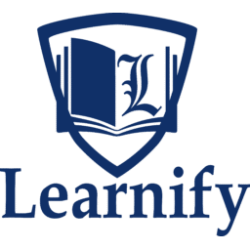Introduction
Children are among the most vulnerable groups in humanitarian crises, facing heightened risks of violence, exploitation, neglect, and abuse. Ensuring their protection is a fundamental aspect of any humanitarian response. This course is designed to equip professionals in the humanitarian field with the knowledge, skills, and practical tools to integrate child protection into emergency programming. Participants will explore the key risks faced by children in conflict, disaster, and displacement settings, as well as the international standards, legal frameworks, and best practices for providing adequate protection and support.
Course Objectives
By the end of the course, participants will:
- Understand the key risks faced by children in humanitarian settings, including gender-based violence, child labor, child recruitment, and family separation
- Learn the child protection principles and frameworks, such as the UN Convention on the Rights of the Child (CRC) and Sphere Standards
- Develop skills to design and implement child protection programs that address the needs of vulnerable children, including those who are unaccompanied, separated, or involved in armed conflict
- Understand the role of various stakeholders in child protection, including governments, NGOs, local communities, and international organizations
- Learn practical tools for monitoring, reporting, and addressing child protection concerns, with a focus on confidentiality and child-sensitive approaches
- Build awareness of child protection in the context of different humanitarian crises, such as natural disasters, armed conflict, refugee displacement, and climate change
Who Should Attend?
This course is ideal for:
- Humanitarian workers and field staff engaged in child protection, including child protection officers, program managers, and caseworkers
- NGO staff and volunteers working with children in emergency situations
- Government officials involved in child protection policies and disaster response
- Donors and funding agencies supporting child protection projects
- UN agencies, human rights organizations, and international organizations
- Psychosocial workers, health professionals, and social workers providing services to children in crisis
Course Outline
Day 1: Introduction to Child Protection in Humanitarian Settings
📌 Key Topics:
- Overview of Child Protection: Defining child protection in humanitarian contexts and understanding the impact of emergencies on children
- Key Risks for Children: Exploring the major protection concerns for children in crisis, including sexual violence, recruitment into armed groups, exploitation, and psychosocial trauma
- The UN Convention on the Rights of the Child (CRC): Key principles and rights related to child protection, including survival, development, and participation
- Sphere Standards and Child Protection: The integration of child protection into humanitarian standards, and the minimum standards for child protection programming in emergencies
🛠 Practical Exercise:
- Case Study: Analyze a real-world case of child protection violations in a conflict or disaster zone, and discuss effective interventions
Day 2: Child Protection Risks and Vulnerabilities in Different Humanitarian Contexts
📌 Key Topics:
- Children in Armed Conflict: Recruitment of child soldiers, detention, and exposure to violence
- Children in Displacement: Risks faced by refugee children, internally displaced children, and children in camps
- Children in Natural Disasters: The specific vulnerabilities of children in post-disaster settings, such as family separation, trafficking, and lack of education
- Child Protection in Climate Change and Environmental Crises: Understanding how climate change and environmental disasters affect child protection needs
🛠 Practical Exercise:
- Contextual Analysis Exercise: Participants will analyze a scenario involving children in a displacement camp, identifying key protection risks and protection programming strategies
Day 3: Protection Mechanisms and Program Design
📌 Key Topics:
- Child Protection Programming: Core components of child protection programs: prevention, response, and psychosocial support
- Family Tracing and Reunification: Procedures for tracing unaccompanied and separated children and reuniting them with their families
- Child-Friendly Spaces: Designing safe spaces for children that promote education, recreation, and psychosocial support
- Psychosocial Support for Children: Addressing the emotional needs of children affected by trauma, with a focus on resilience and healing
🛠 Practical Exercise:
- Program Design: Participants will develop a child protection program for a displacement or refugee setting, incorporating key elements such as child-friendly spaces, family reunification, and psychosocial support
Day 4: Child Protection Monitoring, Reporting, and Advocacy
📌 Key Topics:
- Monitoring and Reporting Child Protection Violations: How to monitor, document, and report child protection violations in a way that is ethical and child-sensitive
- Confidentiality and Ethical Considerations: Ensuring that data collection and interventions respect privacy and confidentiality
- Advocacy for Child Protection: How to engage in advocacy for children’s rights and protection, including engaging governments and international stakeholders
- Child Protection in Legal Frameworks: International legal instruments and protocols that govern child protection in emergencies, such as the Paris Principles and the Cape Town Principles
🛠 Practical Exercise:
- Advocacy Role Play: Participants will engage in a role-playing exercise to advocate for the protection of children in a conflict-affected setting, engaging with government officials and local stakeholders
Day 5: Building Capacity and Sustainability in Child Protection
📌 Key Topics:
- Building Local Capacity for Child Protection: Strengthening the capacity of local actors (e.g., community leaders, local NGOs) in child protection
- Sustainability and Long-Term Support: Ensuring that child protection programs continue beyond the emergency phase and contribute to long-term recovery
- Child Protection and Development Linkages: Integrating child protection into broader development and education programs
- Evaluation and Learning: Monitoring, evaluation, and lesson learning to improve child protection programs
🛠 Practical Exercise:
- Capacity-Building Plan: Participants will develop a plan for building local capacity in child protection in a conflict-affected country, ensuring sustainability and community ownership
Conclusion & Certification
Upon successful completion of the course, participants will receive a Certificate in Child Protection in Humanitarian Action, recognizing their ability to design, implement, and evaluate child protection interventions in complex humanitarian environments.


